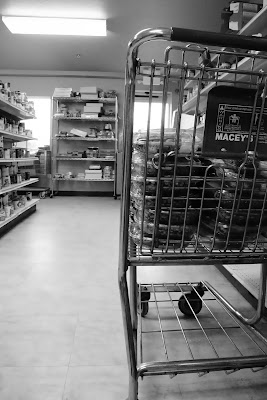When I went to cosmetology school, there wasn't a single man in any of my classes the 3 years I studied. Consequently, in the salons I've been to and worked at across the Salt Lake and Utah Valleys, no males were to be found. I didn't even think twice about it- hairstyling is a women's profession...right?
As I started to think about what I wanted to shoot for my final, I knew I wanted to do something intriguing, different, and that I had a unique interest in.
I began calling all hair schools within an hour radius of me. I had figured out that I wanted to talk to male hair stylists and hair school students to get their perspective on the industry, now I just needed to find them. I knew that this was a far-fetched idea, but I was going to focus in on a minority that doesn't often get noticed or thought about. As I suspected, very few hair schools had any male students at all. Out of 10 schools that I scouted, 2 of them had 2 male students each. Al and Jake attended Paul Mitchell-Provo, and Greg and Hero went to Cameo College in Murray. I took what I could get.
When I arrived at each of the schools, the guys were actually quite willing to talk to me about their decision to enter the beauty industry and how they felt about being very, very outnumbered in their chosen profession and location. As a bonus, I also came across 2 cosmetology instructors that were male and had many interesting insights.
I asked each guy a series of questions:
-What made you decide to enter the beauty industry?
-Do you feel like there is a negative connotation associated with males that do hair in Utah? Do you feel like you fit in at school?
-What do you want to do when you graduate? (Work in a full service salon, do events, etc)
-What do women and your fellow students think about you doing cosmetology?
As I was talking to them, I photographed them doing their thing at school. These are things that I, along with countless other girls, did in hair school: learned how to style hair and use product, played with manikin heads, studied big books of cutting and hairstyling, roundbrushed a million times, and stared in the mirror. These are things that most people probably haven't seen men doing on a regular basis. For that reason, I wanted to get inside their heads for a minute, to see what makes them so dedicated to this profession that they would forge ahead in a sea of women to make a living doing something they obviously must love. I got some great answers, great insights, and had some great laughs.
Al: "Girls actually love that I'm style-conscious. My sister studied at Taylor Andrews Hair Academy, and going there and feeling the fun atmosphere was what really made me want to be a part of the industry."
Jake: "I'm gay, so I'm already a minority in Utah as it is. I just embrace it. I like the versatility of doing hair- there's so many things you can do."
Greg: "I'm obsessed with making things look good-mostly my own hair. That's how I knew I wanted to go into this industry. Being a guy makes it so everyone knows who you are because you're the only one."
Hero: "I went into hair because of the creativity aspect, and because I have family in the business. [his dad owns a prominent salon in downtown SLC]. At first it was weird going to school with a bunch of girls, like what did I get myself into."
Justin: "I really didn't want to go into hair. I was a theater major, but my roommate convinced me that I would be good at this. He said men get rich doing hair, but he was wrong. I love teaching though. I think there is more pressure on men in this industry to be a true professional and to do well for the sake of supporting a family."
Jake: "I was getting a degree in Geology but I got bored. Doing hair is so much fun every day that I wouldn't want to do anything else."
Greg: "I eventually want to do event hairstyles, like specialize in up-dos for weddings."
Justin: "The industry was actually started by males like Vidal Sassoon. It doesn't bother me much that I'm a minority for that reason- it is mainly just in Utah."





















































